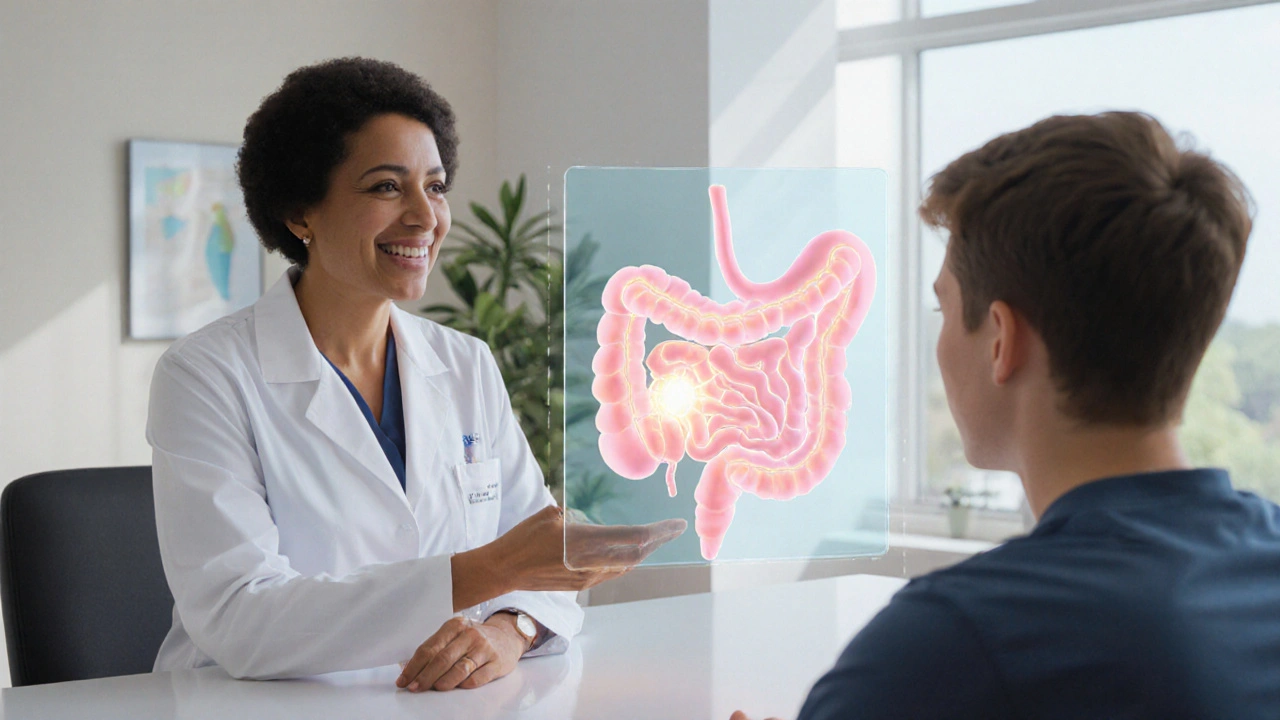Gastrinoma: What It Is, How It Affects You and What to Do
When dealing with gastrinoma, a rare neuroendocrine tumor that overproduces gastrin and drives high stomach acid. Also known as gastrin‑producing tumor, it commonly leads to Zollinger‑Ellison syndrome, a disorder marked by recurrent ulcers and diarrhea. The hormone gastrin, a peptide that stimulates gastric acid secretion is the key mediator.
Why does this matter to you? Excess acid can burn the lining of the stomach and duodenum, creating painful ulcers that don’t heal with ordinary medicine. In many cases the pain spikes after meals, especially foods that are high in protein or fat. Diarrhea often shows up because the extra acid speeds up intestinal transit. If left unchecked, the constant irritation can lead to bleeding, perforation, or even strictures that block food flow.
Key Facts About Gastrinoma
Diagnosing a gastrinoma usually starts with a simple blood test that measures fasting gastrin levels. Levels above 1,000 pg/mL raise a red flag, but doctors also check for low stomach pH to confirm that the hormone is truly driving acid overproduction. After the lab work, imaging steps in. A contrast‑enhanced CT scan or MRI can locate the tumor, while an endoscopic ultrasound gives a close‑up view of the pancreas and duodenum where most gastrinomas hide.
Once the tumor is confirmed, the treatment game shifts to controlling acid and, if possible, removing the tumor. The most effective class of drugs is proton pump inhibitors, medications that block the final step of acid production in the stomach. High‑dose PPIs such as omeprazole or esomeprazole can reduce acid output by more than 95 %, letting ulcers heal and symptoms fade. For many patients, lifelong PPI therapy becomes the backbone of care.
When the tumor is isolated and operable, surgeons aim for a pancreaticoduodenectomy or local excision, depending on size and spread. If the cancer has spread beyond the pancreas, doctors may add somatostatin analogs (like octreotide) to slow hormone release, or consider targeted chemotherapy. Genetic testing is another piece of the puzzle; up to a third of gastrinomas are linked to MEN 1 (multiple endocrine neoplasia type 1), a hereditary condition that also affects the parathyroid and pituitary glands.
Even with aggressive acid suppression, regular follow‑up is crucial. Endoscopy checks that ulcers are closing and not returning, while repeat imaging tracks tumor growth. Because PPIs mask symptoms, a rising gastrin level or new imaging findings can signal that the tumor is progressing despite medication. Patients are advised to avoid NSAIDs, limit alcohol, and eat smaller, low‑fat meals to lessen irritation.
Nutrition plays a quiet but important role. High‑protein meals can trigger more acid, so many providers suggest a balanced diet with moderate carbs, lean proteins, and plenty of fiber. Staying hydrated helps the gut move smoothly, reducing diarrhea episodes. Some people find relief by spacing meals every three to four hours instead of large, infrequent binges.
Living with a gastrinoma can feel overwhelming, but knowing the steps—testing, imaging, medication, possible surgery, and ongoing monitoring—makes the journey manageable. The articles below dive deeper into each of these areas, from symptom checklists to detailed guides on choosing the right PPI dose, surgical options, and coping strategies for families dealing with MEN 1. With the right information and a solid care plan, you can keep acid‑related problems in check and focus on a healthier everyday life.
- September 29, 2025
- Comments 10
- Health and Medicine

